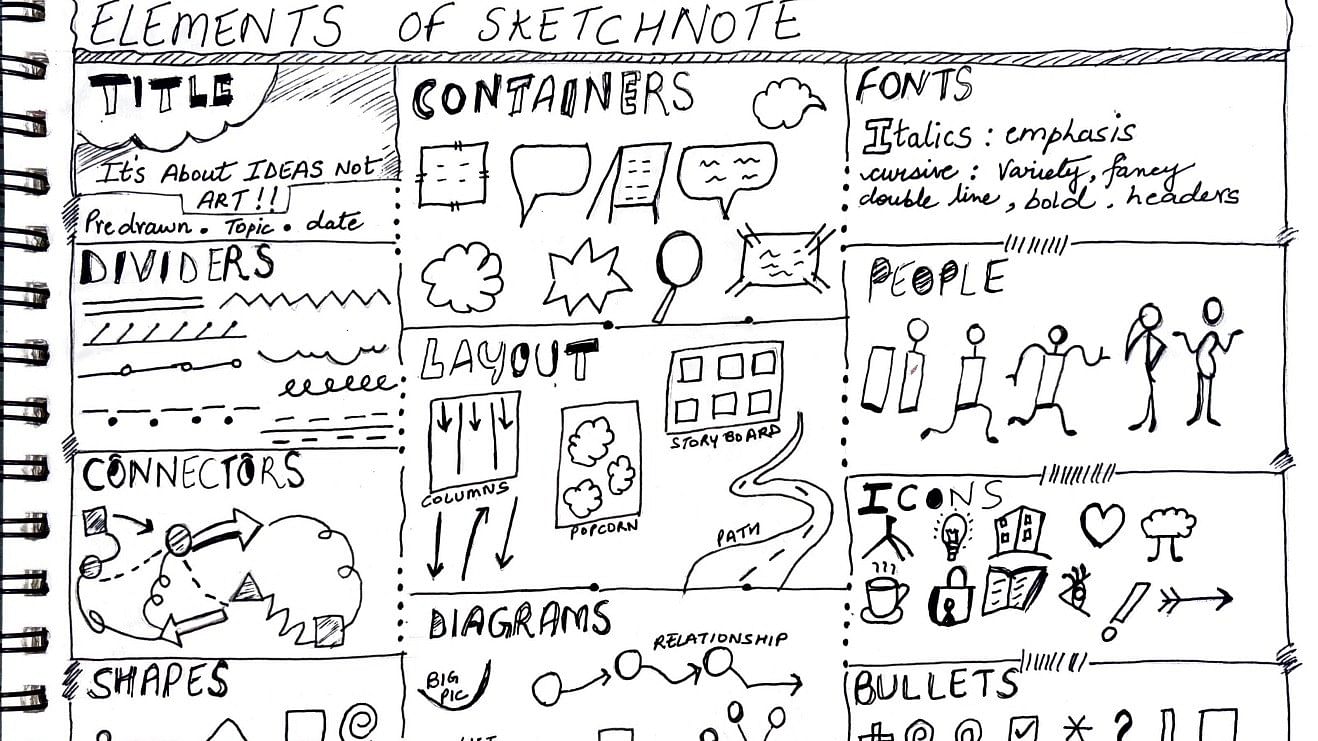
Like many high school teachers, Parul Mathur was confronted by a group of passive and inattentive learners in her Psychology class. Keen to get them to be more active and enthused, Mathur first tried using mind maps to help students connect the dots in her lessons. However, as this method was limiting, she soon switched to sketchnoting. And there’s been no looking back.
For Mathur, who is currently Co-founder of The Teachers’ Collective, an organisation that works with teachers and students to reframe inclusion in Indian schools, sketchnoting has become second nature. When she attends a conference, rather than just jot down points, she creates sketchnotes, which helps her synthesize and remember the content better.
The term “sketch notes” was coined by designer Mike Rohde, who was dissatisfied with the conventional method of note-taking, of simply writing almost everything down verbatim. As he rarely felt inspired to revisit his copious notes, Rohde devised a more efficient, engaging and effective method to note down key points or summaries of meetings or lectures.
In contrast to regular note-taking, sketchnotes combine visual images with text, with the split roughly equal. They also rely on various elements to make the notes more meaningful and coherent. These include fonts, containers or boxes, layouts, symbols, icons, bullets and connectors. Students can convey the main points or gist by combining basic drawings with these elements.
When she first used sketch notes to help her students grow into independent learners, Mathur was struck by how impactful it was for many children. Sketchnotes were an ingenious way to get children to be more attentive and interactive. Further, if used as a prewriting activity, they coaxed reluctant writers to express themselves more freely and fluently. Sketchnotes can also be used to chalk out facets of a storyboard, from character to setting to plot. Once they’ve generated ideas, students are more confident of expressing themselves in words.
Buoyed by its impact on children, Mathur and her team have conducted several workshops for teachers on how to use this method of visual note-taking to enhance student engagement and learning. Sketchnoting is especially relevant in today’s world of diminishing attention spans as it promotes active listening and reading. When listening to a teacher or reading text, students are primed to spot keywords that they can visualise in their notes. They also appreciate the significance of summarising and synthesising information, thereby exhibiting deeper learning.
Mathur emphasises that visual note-taking does not require superior drawing skills. Using basic shapes and juxtaposing them in unique ways, people who feel they have suboptimal drawing skills can still rely on this method to note down key takeaways and their conceptual linkages. Sketchnotes also embrace principles of inclusive practices and may be used for formative assessments.
Mathur says that sketch notes, given their versatility, may be used to frame character sketches, plot timelines, and compare-and-contrast texts. Subjects that lend themselves easily to sketch notes include Science, Environmental Studies, Social Studies, and Languages. Sketch notes also promote study skills in students who otherwise zone out while perusing their textbooks.
According to Mathur, this method of visual note-taking can also spur students to set short- and long-term goals. Students can chart goals in different domains by visualising where they’d like to be five years from now. As it melds the communicative power of words and images, sketch notes may be embraced as a potent teaching-learning strategy.
(The author is a psychologist)